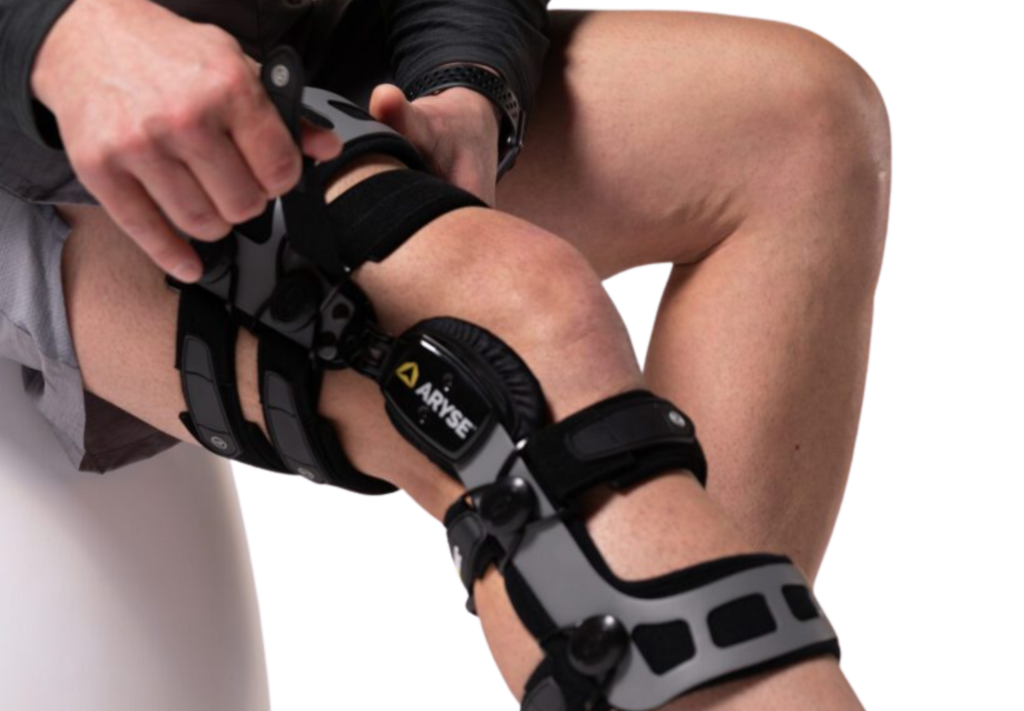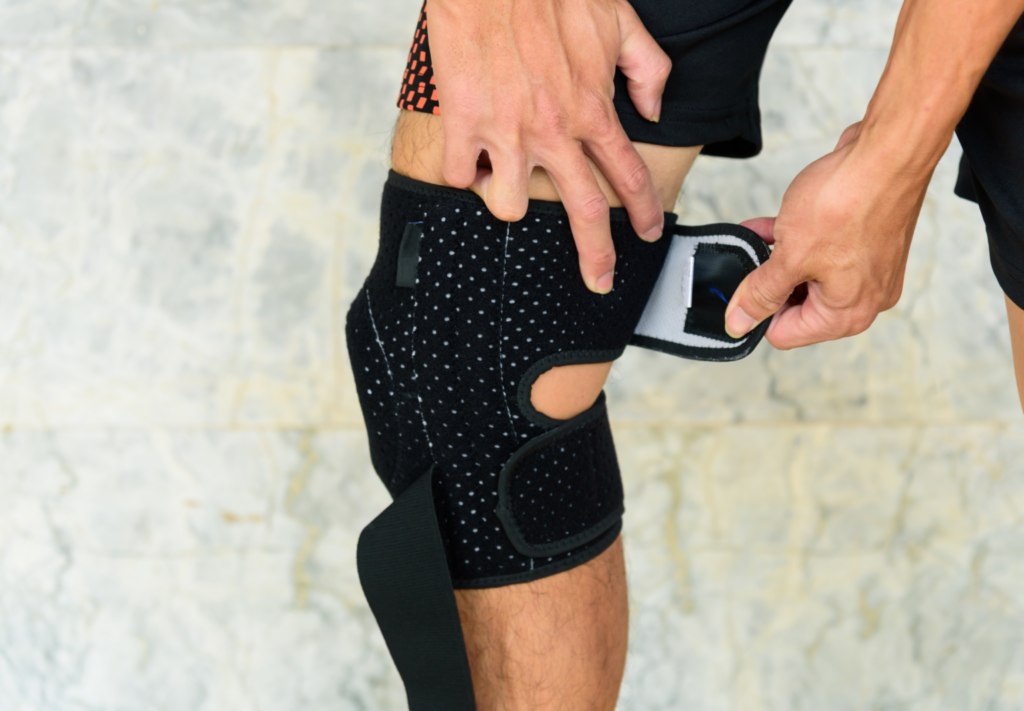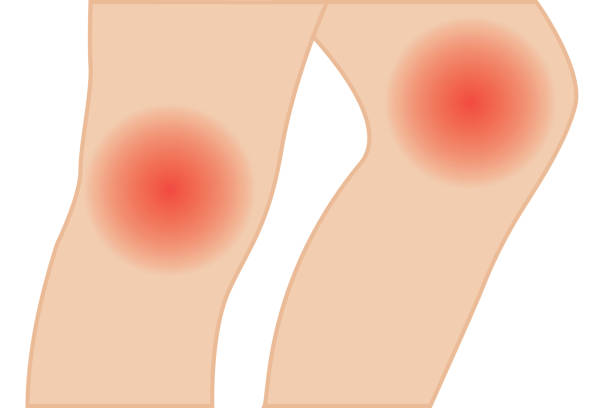



A knee brace immobilizer is used for various acute traumatic knee injuries. It is used as an extension to lock and restrict the slightest motions, especially in case of a ligamentous rupture, soft tissue injury, or surgery. These braces are used to help knee muscles and tendons heal faster. Should you experience pain in your knee, get a knee brace immobilizer from a Medicare approved supplier at a minimal cost.
In this blog, we’ll guide you through what is a knee brace immobilizer, why patients use a knee brace immobilizer, and how to choose the right brace for yourself. If you’re experiencing an acute knee injury, no doubt that you’ll need a knee immobilizer brace at some point in your recovery process, so it’s better to know what knee brace immobilizer do and how to use them to get quick recovery outcomes.
What Is A Knee Brace Immobilizer?
A knee brace immobilizer, as the name suggests, is worn to restrict knee movements and stabilizes the knee area after an injury or surgery. It is used to treat conditions like sports injuries, ligament injuries, strains, sprains, and inflammation of the knee caused by sudden twisting or jumping. The knee braces are usually worn from the upper thigh to mid-calf and are secured in place by using Velcro straps that ensure maximum restriction of the knee movements.
Conditions Which May Require A Knee Brace Immobilizer
• Osteoarthritis
• ACL tear
• Ligament sprains
• Sports knee injuries
• Post-knee surgery
• Patellofemoral stress syndrome
• Knee meniscus injury
• Patellar tendonitis
What Does A Knee Brace Immobilizer Do?
The knee is the largest joint of the body, made up of cartilage, tendons, ligaments, and muscles. With a considerable range of movements, it can be injured when sharply bent or forcibly twisted – causing tearing of the tendons and ligaments that hold the knee together. So how do knee braces work?
Unlike bulkier plaster splint used to immobilize the joints, a knee brace immobilizer is extremely easy to apply and helps you even walk, which makes it popular among patients and doctors alike. The following are some benefits of using a knee brace immobilizer:
1. Corrects Knee Alignment
The primary function of a knee brace immobilizer is to keep the injured knee in its natural position. In addition to that, it works as a knee support brace by reducing the external pressure applied in the affected region — which prevents further tearing of the joint.
2. Speeds Up Healing Process
A knee brace immobilizer strongly holds the injured knee against all types of movements, accelerating the quick healing of fractures, injuries, and surgeries. These are especially beneficial for athletes who often experience ligament tears during a sports activity.
3. Reduce Knee Pain
Knee pain caused by an injury, ligament tear, or ACL tear can be extremely painful. However, when the knee joint is immobilized, the pain originating in the knee area is significantly reduced and an individual finds quick relief. Moreover, the device also provides necessary compression that helps relieve knee pain.
Difference Between Knee Brace And Knee Brace Immobilizer
Many times the term ‘ knee brace’ and ‘knee brace immobilizer’ are used interchangeably. If you’re going to buy a knee brace, it may be necessary to understand if a brace and an immobilizer are the same. Though, the primary function of both, the brace and immobilizer, is to reduce the pain and restrict knee movements to aid in quick healing. The only difference is that a true immobilizer is to keep the joints from moving at all.
An immobilizer is also used as an ACL knee brace to keep the knee fully extended for some time after ACL surgery. A physical therapist often recommends the best knee brace immobilizer to patients because this kind of immobilization is critical to healing and preventing further loss of knee extension.
On the other hand, knee support braces or hinged knee braces come with a metal hinge joint that allows the knee to extend and bend (they allow a little motion as compared to knee immobilizer brace). It provides stability and protects the torn ligament from stress while performing daily activities.
How To Choose The Right Knee Brace Immobilizer?
Acquiring the best knee brace immobilizer is not as simple as going to a store, paying the bill, and picking it up. It is important medical equipment that can help you get back to your normal life quickly so you must make a choice wisely. When choosing the knee brace, there are certain factors that you must keep in mind:
1. Size
Knee braces are available in small, medium, large, and extra-large sizes to meet the needs of all types of patients. To choose the right size, place the knee brace next to the injured leg. the splint of the brace must extend distally within a few inches of the proximally & malleoli — below the buttocks line. Check the individual sizing chart for the specific brace to ensure which measurements should be taken.
2. Material
When buying a knee brace immobilizer, make sure it’s made of top-quality material and can hold up for at least 2-3 years. Medicare-approved suppliers like Daphco provides braces for knee injuries such as orthopedic knee brace, best knee brace for ACL and meniscus tear, hinged knee brace, ACL knee brace, and knee brace immobilizer to patients across the US. You can get lightweight and breathable knee braces that provide the necessary compression and absorb sweat to keep the skin dry.
3. Level Of Support
Knee braces are designed to treat mild injuries while others are designed to provide necessary support and compression to the knee after surgery. Always check the level of support before you buy braces for knee injuries.
4. Weight
A heavy-weight knee brace can make walking difficult. Choose a lightweight knee immobilizer that will aid in healing while also allowing you to perform routine activities such as walking and sitting. It should be designed in a way that you can wear it underneath your clothing.
5. Versatility
It is important that the knee immobilizer fits both the right and left leg and it’s easy to put on and off.
How To Wear A Knee Brace Immobilizer?
To prevent knee movements and get instant pain relief, one must know how to put on a knee brace immobilizer correctly. So, if you have recently experienced a knee injury or your doctor has recommended you immobilization knee brace after surgery, then follow the step-by-step procedure we have mentioned below.
Step 1: If your knee immobilizer brace comes with a pad at the back, make sure it is placed in the right spot. All you need to do is to fix the pad and you’re all set.
Step 2: Keep your injured leg straight on the knee brace immobilizer so that the tapered end lies distal to the person’s knee. Once done, start adjusting the knee brace under the injured leg so that the patellar opening aligns with the kneecap.
Step 3: When you have placed the knee brace, wrap it around the extremity and fasten it in place with the Velcro straps.
Step 4: Once done with the process, cross-check everything to ensure the brace fits properly. A loose knee brace can cause more pain if it slips down. Knee brace immobilizers come in a variety of sizes from 14” to 26” and widths up to 32.” Consult your doctor or customer support agent to find the right size of the brace.
The latest knee immobilizer braces can be easily placed over the clothing so there is no need to remove or cut your patients which is the case if you rely on the traditional plasters. Moreover, they have been designed in a way that a patient can wear them easily. However, if you feel any pain, it’s better to seek the assistance of a friend or family member.
In this video, an expert has explained how to wear a knee brace immobilizer.
How To Walk With A Knee Brace Immobilizer
A knee brace immobilizer is usually worn when walking and removed while sitting or in bed – unless instructed by a healthcare provider or a therapist. Your therapists will instruct you to walk with the help of walkers or crutches. They will guide you on how much weight can you put on safely while wearing the immobilizer.
• Make sure your balance is steady while walking
• Use handrails on stairs
• Avoid wet or slippery floors
• Avoid heels and wear flat shoes that firmly fit your feet
How Long To Wear A Knee Brace Immobilizer? How Tight Should It Be?
Your doctor might recommend you wear a knee immobilizer brace for four to six weeks. Ensure the brace you are wearing fits you properly otherwise it may cause discomfort and skin irritation. When wearing it, make sure it’s snug, but not too snug – straps shouldn’t be so tight that they stop blood circulation and cause pain, tingling, and numbness in the leg. Try the following method to test if your knee brace is too tight:
• Put on the brace and buckle your straps.
• Slide two fingers under a strap.
• If they don’t fit under the strap, the brace may be too tight.
• If you can slide three fingers into the strap, then your brace may be too loose.
• Follow this procedure until your brace is properly fit.
To conclude, if you have a knee injury or going through surgery, a knee brace can help you get back on your feet quickly.
Now that you know everything about the knee brace, you might be wondering where and how to buy a knee brace immobilizer online.
Where To Buy The Best Knee Brace Immobilizer Online?
Whether you have torn ligament, ACL tear, strain, sprain, or injury or have gone through surgery, Daphco can provide you condition-specific knee immobilizer. We are a Medicare-approved supplier so if you have insurance, we can provide you with top-quality braces at a low cost. Want to know how much cost Medicare covers for knee braces? Find all information about Medicare plans here.
Contact us today if you have any questions about our knee braces. Our customer support will answer all your queries and help you find the right knee brace for your condition.
Search Articles
Latest Articles
28th Feb, 24
23rd Feb, 24
20th Feb, 24
15th Feb, 24
13th Feb, 24



 888-616-4156
888-616-4156 




 28th Feb, 24
28th Feb, 24 


